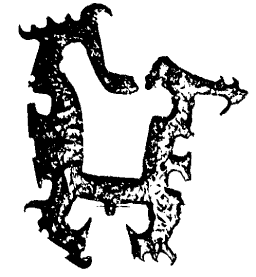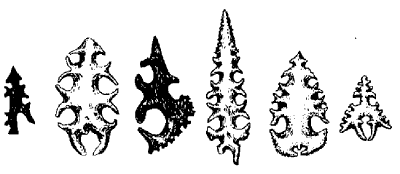 |
Science Frontiers ONLINE No. 106: Jul-Aug 1996 |
|
|
Oklahoma's ornate flints: "eccentric" or fraudulent?
 Some Mayan eccentric flints were of extremely complex and delicate design. |
Many of the flints, whether from Mayan sites or Oklahoma, are incredibly complex. Some are up to 20 inches in length. Countless hours must have been invested in delicately chipping away at flint blanks. Apparently, ornate flints were an art form of great importance to the Maya. They are found in large numbers in the burials of important personages. Archeologists too often explain puzzling artifacts by saying they had "ritual value." But, this answer may be correct here. Mayan eccentric flints are probably the equivalents of Christian stained-glass windows and elaborately illuminated manuscripts. The less "practical" they are, the higher their ritual value!
Purpose aside, did Mayan influence and trade really reach far north into Oklahoma? Many archeologists doubted this at first. They claimed that Tussinger knapped the Oklahoma flints himself and sold them during the Depression for a dollar or so apiece. But how would a simple, uneducated, Oklahoma farmer know about ancient Mayan flint making? Furthermore, Tussinger claims he found some 3,500 of these remarkable objects in a single cache while exploring a mound. That's a lot of flint knapping for one person! (Actually, many very large caches of flints, both practical and "eccentric," have been unearthed in North America.) More recently, the possibility of fraud has diminished with the discovery of similar ornate flints elsewhere in Oklahoma. In 1961, C. Murray found a small cache of 107 flints similar to Tussinger's in the same Oklahoma county.
(Iler, Jim; "Oklahoma's Buried Maya Treasure," Ancient American, no. 13, p. 3, 1996)
Comment. The message of the eccentric flints is that Mayan influence probably did reach far into North America and very likely influenced the Moundbuilders -- perhaps even in the design of their temple mounds.
Reference. Read more about eccentric flints in our Handbook: Ancient Man. Description here.
 | Typical Oklahoman "eccentric" flints. |